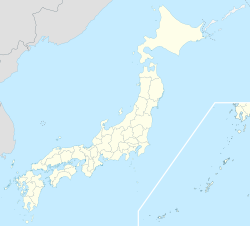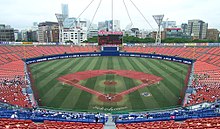
Yokohama is the second-largest city in Japan by population and by area, and the country's most populous municipality. It is the capital and most populous city in Kanagawa Prefecture, with a population of 3.7 million in 2023. It lies on Tokyo Bay, south of Tokyo, in the Kantō region of the main island of Honshu. Yokohama is also the major economic, cultural, and commercial hub of the Greater Tokyo Area along the Keihin Industrial Zone.

Yamate (山手) is the name of a historic neighbourhood in Naka-ku, Yokohama often referred to in English as The Bluff. The neighbourhood is famous as having been a foreigners' residential area in the Bakumatsu, Meiji and Taishō periods. While still dominantly residential in character, with views over downtown Yokohama, historic residential properties, ornamental gardens and public parks, the area is also a popular visitor destination.

Minato Mirai 21, often known as simply Minato Mirai and abbreviated as MM, is the central business district of Yokohama, Japan. Initially developed in the 1980s, Minato Mirai 21 was designed as a large master-planned development and new urban center planned to connect Yokohama's traditionally important areas and commercial centers of Kannai and the Yokohama Station area.
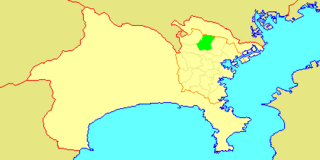
Tsuzuki-ku (都筑区) is one of the 18 wards of the city of Yokohama in Kanagawa Prefecture, Japan. As of 2010, the ward had an estimated population of 199,258 and a density of 7,130 persons per km2. The total area was 27.93 km2.
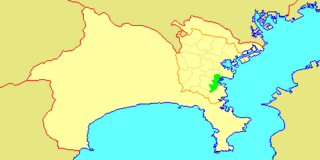
Isogo-ku (磯子区) is one of the 18 wards of the city of Yokohama in Kanagawa Prefecture, Japan. As of 2010, the ward has an estimated population of 163,406 and a population density of 8,520 persons per km2. The total area is 19.17 km2.

Kanazawa-ku (金沢区) is one of the 18 wards of the city of Yokohama in Kanagawa Prefecture, Japan. As of 2010, the ward had an estimated population of 209,565 and a density of 6,760 persons per km². The total area was 31.01 km2 (11.97 sq mi). The ward symbol, established 1987, expresses the image of sea, waves, and a sea gull.

Hodogaya-ku (保土ケ谷区) is one of the 18 wards of the city of Yokohama in Kanagawa Prefecture, Japan. As of 2010, Hodogaya Ward had an estimated population of 205,887 and a density of 9,400 inhabitants per square kilometer (24,000/sq mi). The total area was 21.91 km2 (8.46 sq mi).

Izumi-ku (泉区) is one of the 18 wards of the city of Yokohama in Kanagawa Prefecture, Japan. In 2010 the ward had an estimated population of 155,674 and a density of 6,620 persons per km². The total area was 23.51 km².

Kōhoku-ku (港北区) is one of the 18 wards of the city of Yokohama in Kanagawa Prefecture, Japan. As of March 1, 2012, the ward had an estimated population of 332,488, with 156,198 households and a population density of 10,588.79 persons per km2. The total area was 31.40 km2. Kōhoku Ward has the largest population of Yokohama's 18 wards, and ranks second to Naka Ward in the total number of workplaces.
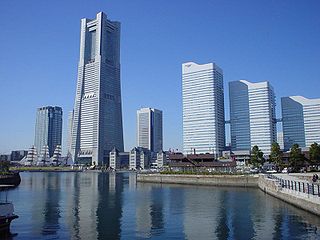
Nishi-ku (西区) is one of the 18 wards of the city of Yokohama in Kanagawa Prefecture, Japan. As of 2010, the ward had an estimated population of 93,027 and a density of 13,210 persons per km². The total area was 7.04 km².
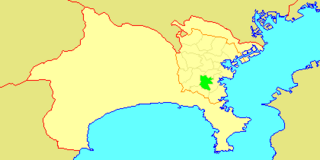
Kōnan-ku (港南区) is one of the 18 wards of the city of Yokohama in Kanagawa Prefecture, Japan. As of 2010, the ward had an estimated population of 221,536 and a density of 11,150 persons per km2. The total area was 19.87 km2.
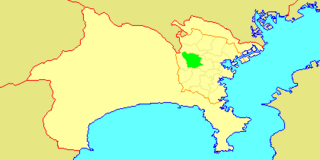
Asahi-ku (旭) is one of the 18 wards of the city of Yokohama in Kanagawa Prefecture, Japan. As of 2010, the ward has an estimated population of 249,045 and a population density of 7,600 persons per km2. The total area is 32.77 km2.
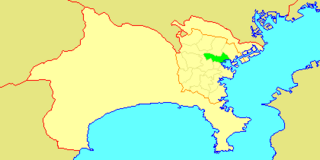
Kanagawa-ku (神奈川区) is one of the 18 wards of the city of Yokohama in Kanagawa Prefecture, Japan. As of 2010, the ward had an estimated population of 230,401 and a density of 9,650 persons per km2. The total area was 23.88 km2.
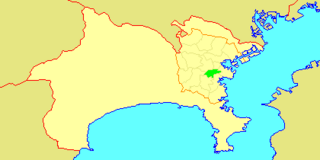
Minami-ku (南区) is one of the 18 wards of the city of Yokohama in Kanagawa Prefecture, Japan. As of 2010, the ward had an estimated population of 197,019 and a density of 15,550 persons per km². The total area was 12.67 km².

Sakae-ku (栄区) is one of the 18 wards of the city of Yokohama in Kanagawa Prefecture, Japan. As of 2010, the ward had an estimated population of 124,845 and a density of 6,750 persons per km². The total area was 18.55 km².
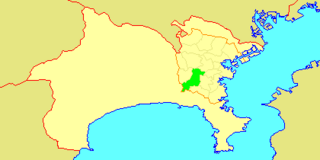
Totsuka-ku (戸塚区) is one of the 18 wards of the city of Yokohama in Kanagawa Prefecture, Japan. As of 2010, the ward had an estimated population of 273,418 and a density of 7,640 persons per km2. The total area was 35.70 km2.

Motomachi is a district in Naka Ward in Yokohama, Japan. It is located immediately west of Yamate and east of Chinatown. It consists of the Motomachi Shopping Street, which is a five-block-long stretch of boutiques and shops. It is known in Japan for its cosmopolitan atmosphere, original fashion, and Western influence.
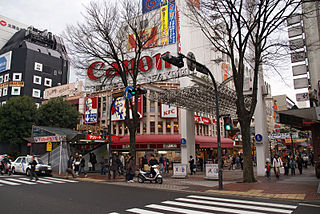
Isezakichō (伊勢佐木町) is a district of Naka Ward in Yokohama, Japan, consisting mainly of the Isezakichō Shopping Street. The shopping street is 1.2 km (0.75 mi) long, running from Isezakicho 1-chōme in the northeast, to Isezakicho 7-chōme in the southwest, approximately parallel to the course of the Ōoka River.

Kannai (関内) is a district in Naka Ward, Yokohama, Japan, bounded by the Ōoka River, JR Negishi Line, Nakamura River, and Yokohama waterfront. "Kannai" is not an official name of the area, but the common term of reference has been in use for over a century.





